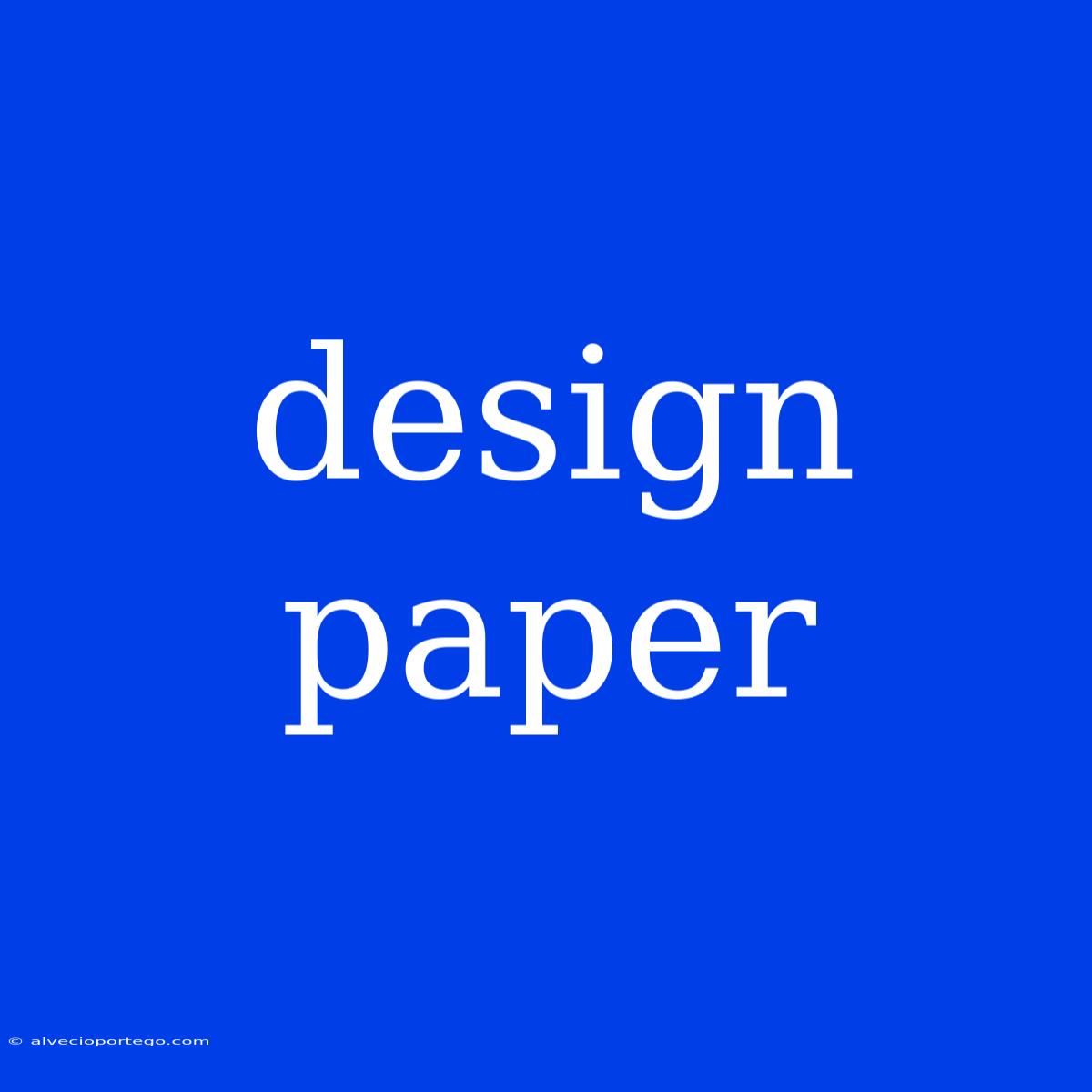Designing Paper: A Guide to the Materials, Processes, and Possibilities
Paper, a seemingly simple material, holds a vast potential for design exploration. From the tactile feel of a textured surface to the vibrant colours of a hand-painted sheet, paper can be transformed into an expressive medium for designers and artists alike.
Understanding Paper Basics
Paper is essentially a thin sheet of cellulose fibers, usually derived from wood pulp, compressed and dried. Different qualities of paper are created by varying the type of pulp, the manufacturing process, and the addition of additives. Here's a breakdown of key considerations:
- Weight and Thickness: Measured in grams per square meter (gsm), paper weight affects its sturdiness and visual impact.
- Texture: Paper can have a smooth, rough, or textured surface, contributing to its visual appeal and tactile experience.
- Colour: Paper comes in a wide array of colours, providing endless creative possibilities.
- Opacity: This refers to how much light passes through the paper. Higher opacity means less transparency.
Exploring Design Techniques
Paper can be manipulated in numerous ways to achieve unique visual and tactile effects:
- Folding: Origami and kirigami utilize precise folding techniques to create intricate three-dimensional forms.
- Cutting and Punching: Techniques like die-cutting and paper punching can create detailed patterns and shapes.
- Printing: From traditional letterpress to modern digital printing methods, paper can be printed with intricate designs and images.
- Embossing and Debossing: These techniques create raised or recessed designs, adding dimension and texture.
- Papercraft: This encompasses a wide range of paper-based art forms, including models, sculptures, and decorative elements.
Sustainable and Innovative Paper Design
As designers become increasingly aware of environmental concerns, sustainable paper options are gaining traction:
- Recycled paper: Made from post-consumer waste, it reduces landfill waste and promotes resource conservation.
- FSC certified paper: This label guarantees that the paper comes from responsibly managed forests.
- Biodegradable paper: These materials break down naturally, minimizing environmental impact.
- Digital paper: Using digital technologies, designers can create unique and sustainable paper alternatives.
The Future of Paper Design
With advancements in technology and a growing demand for sustainable practices, the future of paper design is brimming with possibilities. Expect to see:
- Interactive paper: Paper incorporating digital elements like sensors and microchips.
- Bio-based paper: Made from renewable and sustainable sources like bamboo and hemp.
- Personalized paper: Customized designs, colours, and textures tailored to individual needs.
Conclusion
Paper remains a versatile and captivating material for designers and artists. By understanding its properties, exploring creative techniques, and embracing innovative practices, we can unlock the boundless potential of this timeless medium. Whether it's a simple hand-drawn sketch or a complex architectural model, paper continues to inspire and empower creativity.

